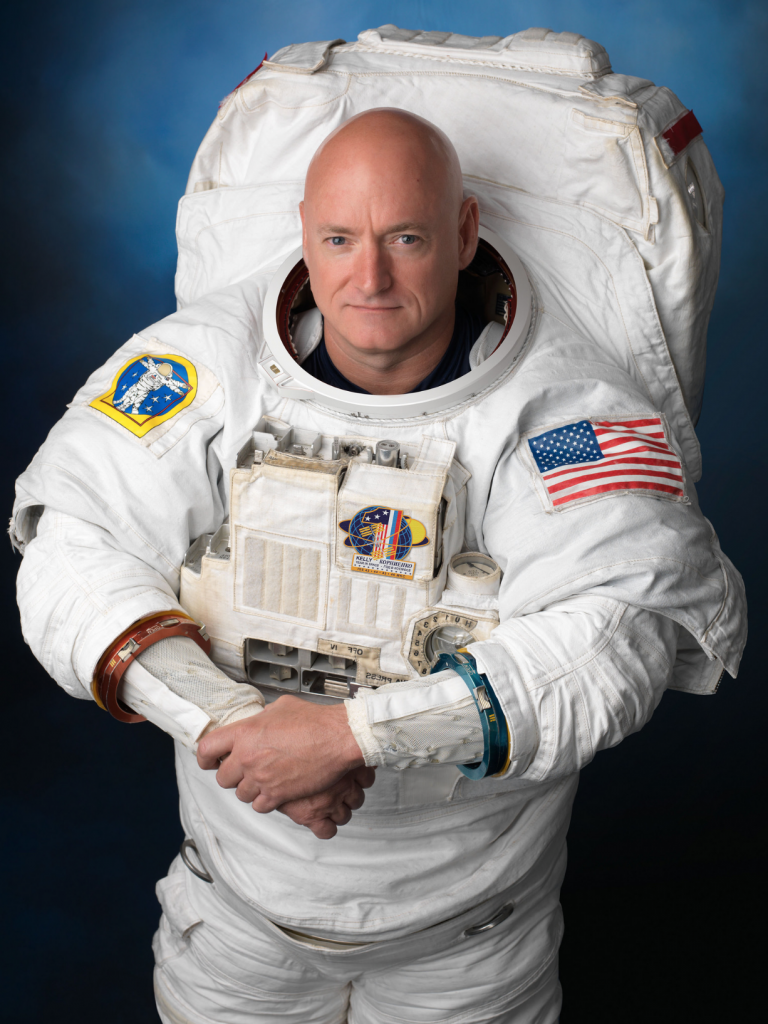
International Space Station Commander Scott Kelly (bio)
After a year in space, astronaut and International Space Station Commander Scott Kelly (USA) and cosmonaut Mikhail Kornienko (Russia) return to Earth on Tuesday March 1, 2016. Also returning is cosmonaut Sergey Volkov (Russia). Hatch closure will take place at 4:40 pm ET, undocking at 8:05 pm ET, and deorbit burn at 10:34 pm ET. Touchdown on Earth is expected in Kazakhstan at 11:27 pm ET. You can watch live right here on the SSEP National Blog in the NASA TV portal below.
Below is a video detailing the One-Year Mission and narrated by Billy Dee Williams. Also below is the official NASA Press Release on Tuesday’s return to Earth, including times of live coverage on NASA TV, and links to the science behind the One-Year Mission as a precursor to long duration deep space missions to, e.g., Mars.
Coverage on NASA TV actually begins at 3:10 pm ET today, Monday, February 29, 2016, with the change of command ceremony aboard ISS. We invite SSEP students, teachers, and their families to tune in at home – after all, you are part of America’s Space Program, and on Tuesday history is being made with the end of the One-Year Mission.
SSEP – real spaceflight all the time
WATCH LIVE ON THE NASA TV PORTAL BELOW:
http://www.nasa.gov/multimedia/nasatv/#.Ux37dCjn1sQ
February 24, 2016
MEDIA ADVISORY M16-015
One-Year Crew Returns from Space Station March 1; Live Coverage on NASA TV
NASA Television will provide complete coverage Tuesday, March 1, as three crew members depart the International Space Station, including NASA astronaut Scott Kelly and cosmonaut Mikhail Kornienko of the Russian space agency Roscosmos – the station’s first one-year crew.
NASA Television coverage will begin at 3:10 p.m. EST on Monday, Feb. 29, when Kelly hands over command of the station to fellow NASA astronaut Tim Kopra. Complete coverage is as follows:
Monday, Feb. 29
3:10 p.m. — Change of command ceremony (Scott Kelly hands over space station command to Tim Kopra)
Tuesday, March 1
4:15 p.m. — Farewell and hatch closure coverage; hatch closure scheduled at 4:40 p.m.
7:45 p.m. — Undocking coverage; undocking scheduled at 8:05 p.m.
10:15 p.m. — Deorbit burn and landing coverage; deorbit burn scheduled at 10:34 p.m., with landing at 11:27 p.m. (10:27 a.m. on March 2, Kazakhstan time)
Wednesday, March 2
1:30 a.m. — Video file of hatch closure, undocking and landing activities
Twice the duration of a typical mission, Kelly and Kornienko’s station-record 340 days in space afforded researchers a rare opportunity to study the medical, physiological, and psychological and performance challenges astronauts face during long-duration spaceflight.
The science driving the one-year mission, critical to informing the agency’s Journey to Mars, began a year before Kelly or Kornienko floated into the space station. Biological samples were collected and assessments were performed in order to establish baselines. Comparison samples were taken throughout their stay in space and will continue for a year or more after their return to Earth. Kelly’s identical twin brother, former NASA astronaut Mark Kelly, participated in parallel twin studies on Earth to provide scientists more bases for comparisons.
ISS Expedition 47 officially begins, under Kopra’s command, when the Soyuz carrying Kelly, Kornienko and Volkov undocks from the space station. Kopra, Yuri Malenchenko of Roscosmos and Tim Peake of ESA (European Space Agency), will operate the station as a three-person crew until the arrival of three new crew members in two weeks. NASA astronaut Jeff Williams and Roscosmos cosmonauts Alexey Ovchinin and Oleg Skripochka are scheduled to launch from Baikonur, Kazakhstan, on March 18 EST.
For NASA TV streaming video and schedule, visit:
For more information about the International Space Station, visit:
-end-
NASA news releases and other information are available automatically by sending an e-mail message with the subject line subscribe to hqnews-request@newsletters.nasa.gov.
To unsubscribe from the list, send an e-mail message with the subject line unsubscribe to hqnews-request@newsletters.nasa.gov.
The Student Spaceflight Experiments Program (SSEP) is a program of the National Center for Earth and Space Science Education (NCESSE) in the U.S., and the Arthur C. Clarke Institute for Space Education internationally. It is enabled through a strategic partnership with NanoRacks LLC, working with NASA under a Space Act Agreement as part of the utilization of the International Space Station as a National Laboratory. SSEP is the first pre-college STEM education program that is both a U.S. national initiative and implemented as an on-orbit commercial space venture.
The Smithsonian National Air and Space Museum, Center for the Advancement of Science in Space (CASIS), and Subaru of America, Inc., are U.S. National Partners on the Student Spaceflight Experiments Program. Magellan Aerospace is a Canadian National Partner on the Student Spaceflight Experiments Program.



